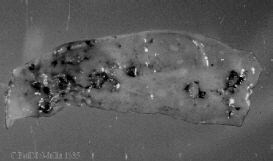



Ulcerative Enteritis, Quail disease
Introduction
Ulcerative Enteritis is an acute, highly contagious disease of chickens and quail caused by the bacterium Clostridium colinum and characterised by ulcers of the intestines and caecae. It can start suddenly and cause high mortality: 100% in quail and 10% in chickens. Turkeys, game birds and pigeons may also be affected. The condition occurs worldwide. The route of infection is oral and transmission is from faeces of sick or carrier birds or via flies. The bacterium resists boiling for 3 minutes. Predisposing factors include Coccidiosis (especially E. necatrix, E. tenella, and E. brunetti), IBDV and overcrowding.
Signs
- Listlessness.
- Retracted neck.
- Drooping wings.
- Partially closed eyes.
- Ruffled feathers.
- Diarrhoea.
- Anaemia.
- Watery white faeces (quail).
Post-mortem lesions
- Deep ulcers throughout intestine, but mainly ileum and caecae, which may coalesce and may be round or lenticular.
- Pale yellow membranes,.
- Peritonitis (if ulcers penetrate).
- Blood in intestine.
- Necrotic foci in liver.
Diagnosis
A presumptive diagnosis may be made on history and lesions. Confirmation is on absence of other diseases and isolation of Cl. colinum in anaerobic conditions (the agent is often present in pure culture in liver). Differentiate from histomonosis ('Blackhead'), necrotic enteritis, coccidiosis, salmonellosis, trichomoniasis.
Treatment
Streptomycin (44 gm/100 litres water), Bacitracin, Tetracyclines, penicillin (50-100 ppm in feed), amoxycillin, multivitamins. Response to treatment should occur in 48 to 96 hours. Treat for coccidiosis if this is a factor.
Prevention
Infection-free birds, all-in/all-out production, low level antibiotics as per treatment, possibly probiotics.
 |
| Figure 35. Wall of the caecum of a chicken suffering from ulcerative enteritis |







